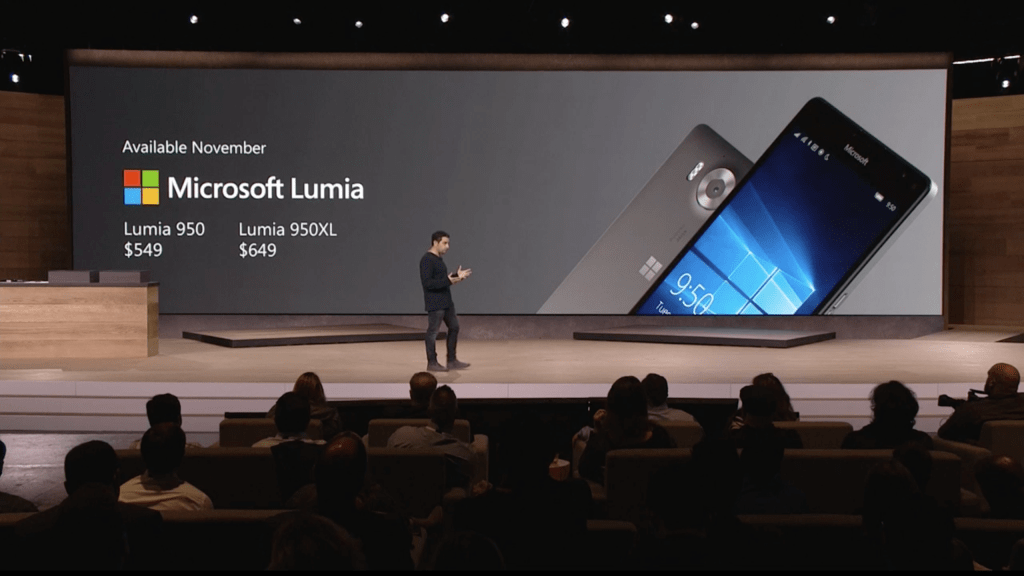Microsoft unveiled the best phones no one buys at a press conference in New York today. As expected, the company showcased two new flagship devices, the Lumia 950 and the Lumia 950 XL. As the names suggest, the XL variant is a phablet. These devices come with great specs. Yet, these devices are exclusive to AT&T in the U.S.
“We want to put Windows in your pocket,” Panos Panay said on stage. “If you haven’t thought about these phones, wake up!”
The Lumia 950 comes with octacore and hexacore processors and liquid cooling technology. The smaller version has a 5.2-inch display, while the bigger cousin features a 5.7-inch display. These are OLED displays with a pixel density of 564 ppi and 518 ppi respectively.
The two devices will ship in November for $549 and $649, with the XL version costing $100 more.
Panay finally hinted at the power of this device. Why would you need liquid cooling for just a phone? Because it’s more than a phone. You can actually plug your Lumia 950 to a dock and use it with your display, mouse and keyboard. It runs a nearly full version of Windows 10.
Called Continuum, the dock has an HDMI, DisplayPort and three USB ports. It looks like a good old USB hub, it’s very tiny and easy to put in your bag. The tile interface in the Start menu copies your phone’s start menu so that you get the exact same apps on your computer and on your phone. Universal apps, such as Mail and Word are scaled up version of the mobile apps.
The demo was very smooth. You can switch between tasks using the regular task switcher. And the best part is that you can still use your phone when your phone is docked. To be clear, this isn’t Windows per se as it runs on an ARM processor, but it is Microsoft’s vision of the future of computing.









































Comment